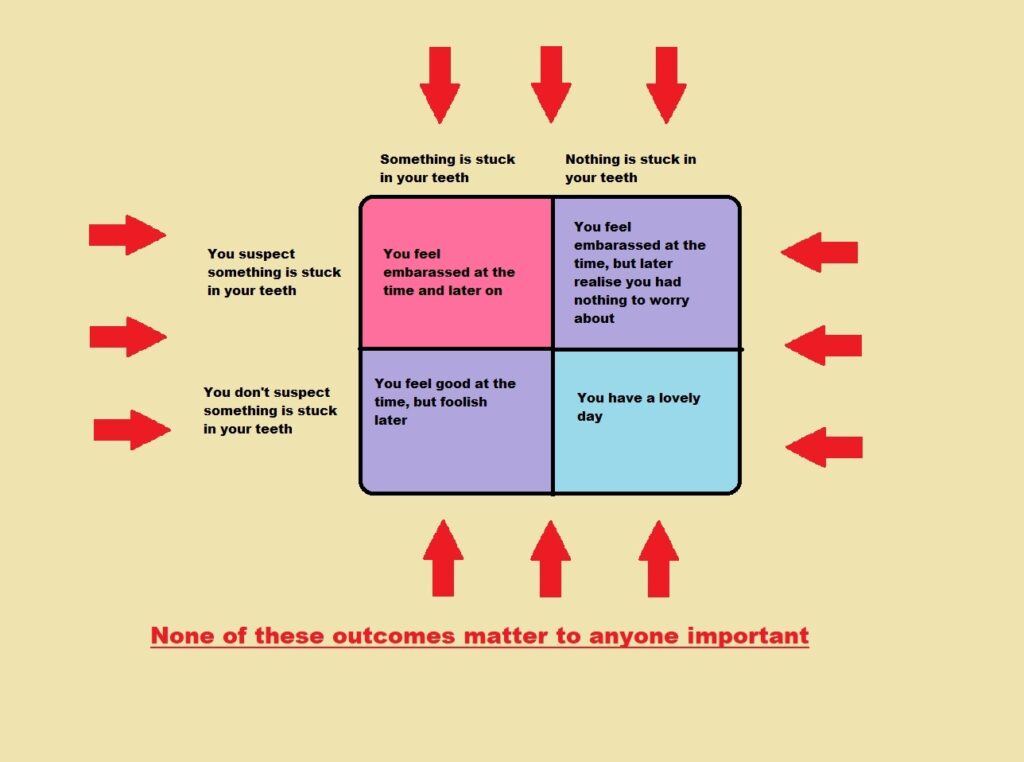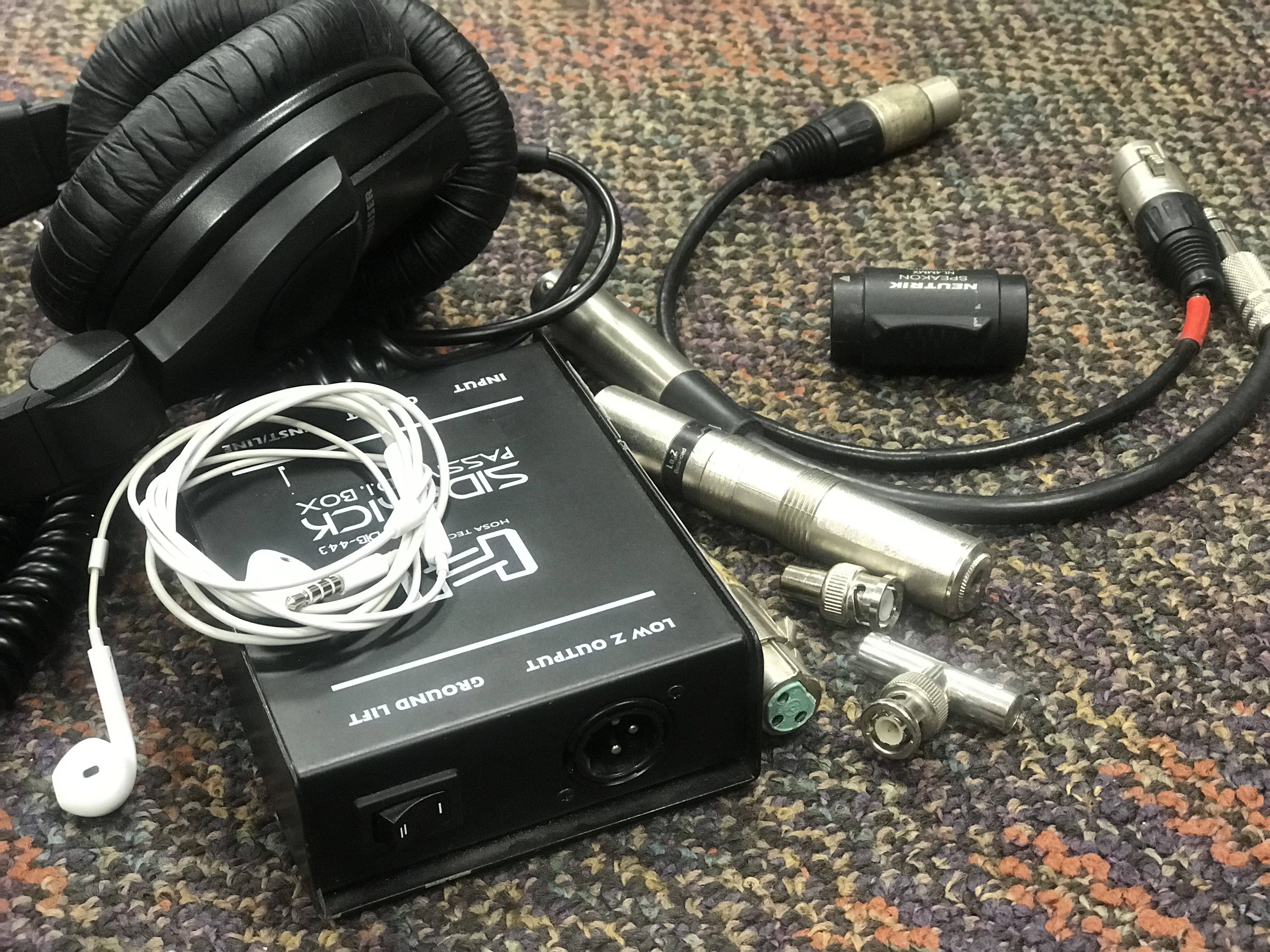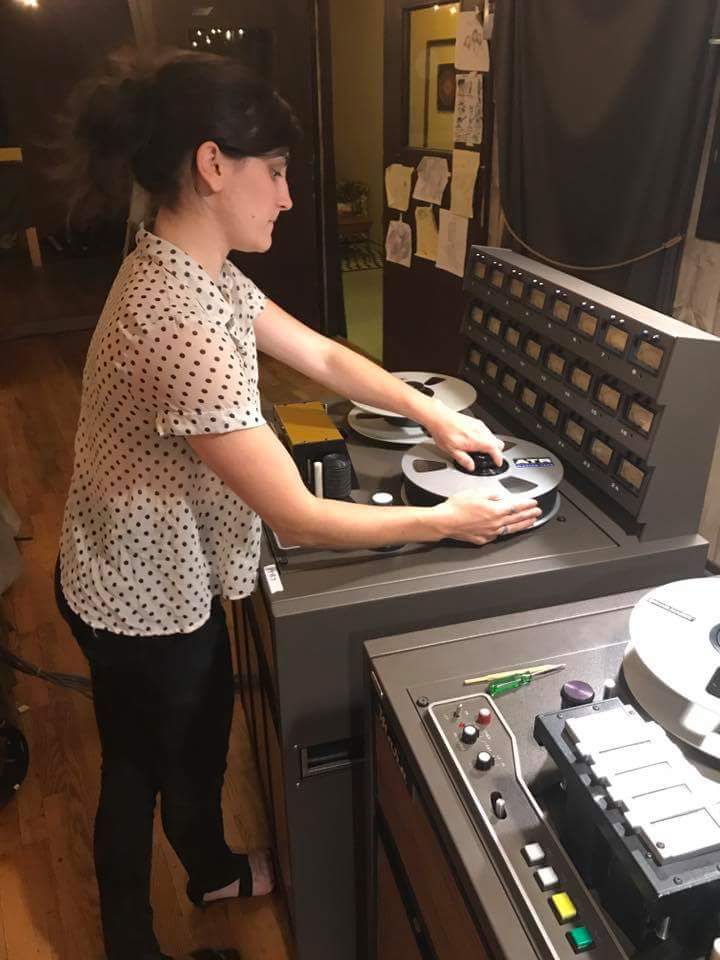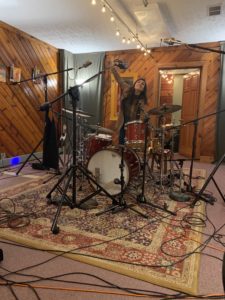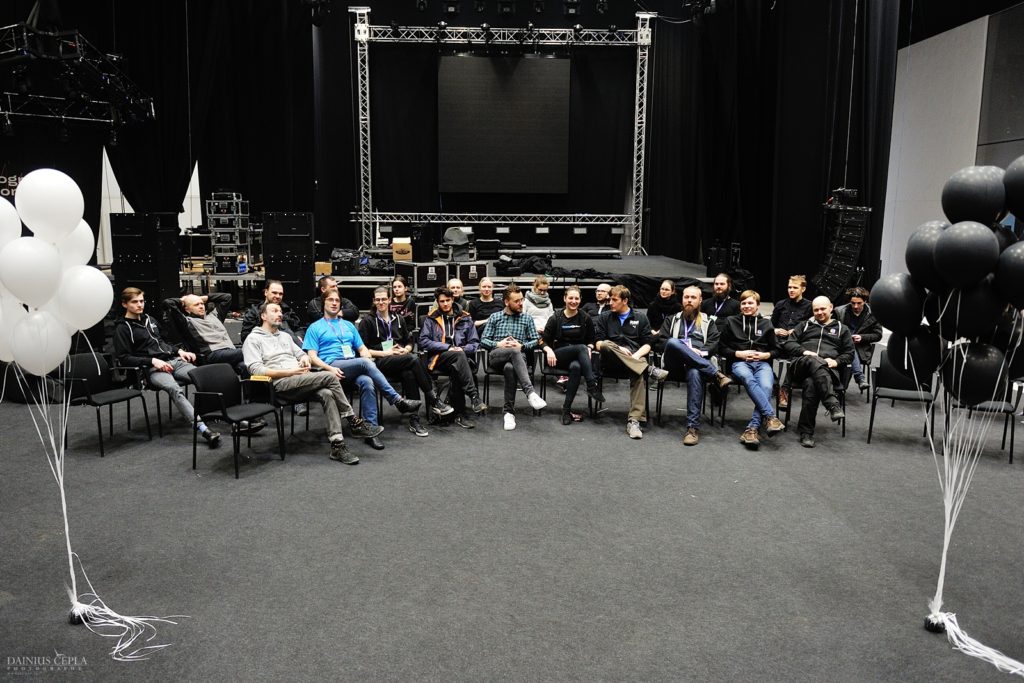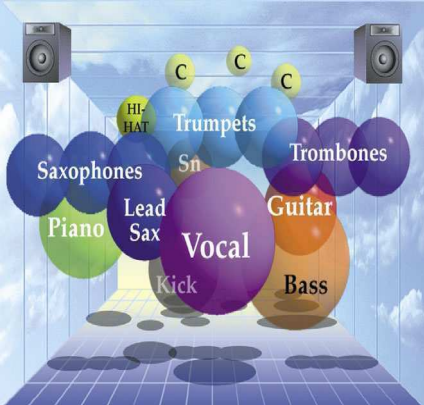How to prevent and prepare for the worst
A few months ago, I was having lunch with a friend who works in post-production and she mentioned that she did not have the nerves for live sound, that it in fact scared the hell out of her. I remarked it scared the hell out of us too, and that is why we are always prepared for the worst case scenarios. She then asked what types of things, we did not have enough time to get into it at lunch, but I thought it would be helpful to interview a few engineers to get their advice and tips. Karrie
Kim Watson: Freelance Audio Engineer. Monitor Engieer for The Subways
The lost art of fault-finding.
I have been noticing a shift within the industry as far as audio education is concerned. Engineers are entering our world from university courses and have the knowledge and experience to be able to mix shows; however, they lack one important part of our job that is gained from experience. The art of fault-finding seems to have been lost. A few years back you would have learned this skill working alongside other engineers, or with working with equipment that was all individually wired together rather than being nice multi-pinned systems that most companies use today. These young engineers can walk straight on to mixing gigs and can find themselves flustered when something isn’t quite right. I’ve been thinking about ways of teaching fault finding.
I had an idea to teach the process by looking at the thought processes we go through and creating a little flow chart they could refer too to get them through situations like this.
Microphone not working.
- Does it need phantom power?
- Is the Di box turned on?
- Check your desk patch.
- Check the physical patch.
- Change mic cable (80% of problems)
- Change stage satellite cable (10%)
- Change multicore channel (5%)
- Change mic / Di (5%)
Monitor not working (totally off)
- Is the amp turned on?
- Is the speaker plugged in?
- Check your desk patch.
Is the signal reaching the crossover/amp?
- If YES Change the Speaker cable.
- If NO problem is signal into amp or processor.
Does the Speaker work if plugged into another amp channel?
- If Yes its Cable
- If no change the wedge – could be dead.
Monitor Missing Hf or low but something is working.
Is the Active/passive switch in the right mode? (Passive one amp channel / Active 2 amp channels + Crossover)
This usually means either a cable is broken OR you have lost blown a driver.
Swap the speaker onto another Speaker cable you know is working on another speaker. Does the speaker now work?
Yes It’s the cable
No, it’s a blown driver or the speakon in the box. (If the speaker has a link…. Try it in the link. It may be the speakon connection in the box)
We don’t have problems, We just have other things we need to sort out!
When things go wrong it’s all down to your mindset. Seeing it as a problem can induce panic. Staying calm is the number one way of dealing with things when they arise. If you panic you freeze and your brain stops working. Take a deep breath and think. Have a strategy in place for dealing with each type of issue when it arises is important. Be it having a Spare lead vocal on the floor between the wedges ready to go, or a spare processor/amp channel in the rack ready to patch in. Prepare for the worst but expect the best.
Becky Pell: Freelance Monitor Engineer
Don’t be lazy about your ‘active’ spares such as IEM packs. They’re no use sitting in a drawer with a flat battery having last been checked three weeks ago – get them out every day, test them and have them ready to go
Be tidy with cabling and label EVERYTHING – it saves valuable time when there’s an issue.
Learn to stay calm. The more you want to panic and run round like a headless chicken, the more you need to slow down and be methodical. Sounds counterintuitive but freaking out NEVER helps!
Brad Madix: FOH for Rush, Florence and the Machine and more
There has to be redundant (or complimentary) inputs from every input you think of as critical to the mix. For example, two mics on the snare top & bottom is a great idea. Kick mics in and out, so you can combine the sounds for a more complete kick sound AND you at least have one if the other fails. Finally, EVERY input list should have backup handheld wireless on a stand (assuming you’re using wireless) AND a spare handheld ON A WIRED because wireless systems also fail.
I would highly suggest creating a macro or event on the console that routes your spare mics into the main mic channel at the touch of a button. This way you’re not readjusting a different channel (which might be on a different layer) to get back to the sound you had on the original channel.
Also a good idea: spin up a rudimentary FOH mix on the monitor console even if I’m mono. If the FOH console were ever to go down and you just can’t get it back, you will have a source in a pinch to get you through the show.
Ditto spinning up a rudimentary monitor mix or three in the FOH console in case the monitor desk goes kablooey. FYI, I have had to do both of the above things in my career. Also, this is not a digital vs. analog thing. I have watched analog consoles spew smoke before a show on several occasions, and I’ve seen digital desks decide not to cooperate as well.
On the subject of failure on a more personal level: it takes a bit of a thick skin to be a live engineer. I have mixed numerous pop tours where I went the entire run without a complaint. I can probably count on my fingers the number of shows I mixed for Rush over a twenty-year span where someone in the audience didn’t think they could do it better and was happy to tell me so. Remember: you are never going to make everyone happy all of the time. Do your best, apply and improve yourself every day, pack up your gear quickly and neatly at the end of the night and move on, regardless of how the show went.
The important thing is to not panic. Remain calm so you can think clearly. Focus on what is working and keep that going while you work on the problem.
Knowing signal flow is crucial in troubleshooting. This is a huge peeve of mine. Many people do not understand the path of the audio signal from the source and through the entire system. If you don’t understand this, you have no idea where to start when a problem arises. If you understand signal flow, you can systematically work things out to find the source of the problem quickly.
Basic troubleshooting skills are a must. Know how to work through an input that’s gone bad to find the problem. You need to start from one end and work through to the other in a logical order, not just randomly replacing pieces throughout the signal path.
Keeping things neat and labeled helps troubleshooting be efficient.
Doing another line check just prior to show time to make sure all inputs are still working. You never know what the support act stepped on, kicked over, unplugged, etc. Even if there is no support act, it’s always a great idea to confirm things before the band hits the stage.
Having communication between the stage and FOH either via Clear-Com, Talkback, a tech who can move between the two. If you have a problem, you need a way of communicating to get it sorted out.
Christina Moon: Monitor Engineer LCD Sound System, Death Cab for Cutie, and more
First and foremost, pretend youʼre calm, however, youʼre not. Seconds feel like hours to both you and the artist. Iʼm fairly superstitious onstage, so I make sure the setup is the same every day. If something burns me once, it will never be back on the stage.
If youʼre ready for a problem, I believe, the likelihood of something happening goes way down.
Always have a spare main vocal, this can buy you some precious time. I label each end of every cable, sub snake, amp rack, etc. This will make chasing something down much easier in the middle of a show when itʼs dark and loud. I have backups of everything at the ready. IEM packs, wedges, cables, etc.
I keep a 100ʼ xlr cable next to me, so if a channel goes down, the first thing I do is home run that channel to the split. I find the path of least resistance for a fix in the middle of a show. Thereʼs no time for detailed troubleshooting.
Backline techs can be of big help figuring problems out in monitor world. Often theyʼre listening to the artistʼs mix and can help decipher if itʼs a gear issue, input, or mix problem. When something goes wrong Iʼll take all the help I can get.
Good luck out there!
Karrie Keyes: Monitor Engineer for Pearl Jam and Eddie Vedder
Agree with all of the above and also Don’t Panic. I am a monitor engineer and nothing instills panic in musicians more than you looking back at them with a “Deer in the Headlights” Look. Even if you are dying inside, you must look calm.
I always have a plan for when something goes wrong. Spare Mixes, Spare Mics, Spare IEMS, Spare IEM Beltpacks
IEM Beltpacks: We tour with production and the band use to own an IEM System, we now rent, but we own beltpacks for each of the musicians using ears. They each have two. Main and Spare. These packs are marked and are always Mike Main or Mike Spare, etc. This way I have a history of the packs and can sort issues, quickly. The techs get the spares, in case they need to change out the pack during the show.
Always check the battery compartment each day, these tend to get loose, and if they are loose, they will shut off if they get bumped hard, etc.
You should be coordinating your RF daily.
Band Ears: Always make sure you have spares, spare cables and that you check and clean ears daily.
Vocal Mics: You should have a spare vocal mic, wired, and ready to go. You should have a spare mic stand ready to go as well.
Spare Microphone: Similar to what Brad recommended but I am in control of it, we have Main, Spare, and RF on a three-way switch. Think of a 3-way Y on a switch. I can switch to the spare mic instantly if it goes down, FOH never knows, any changes we have made to the channel are still there. Also, when my singer goes to the RF Mic, I see this instantly and can switch it to RF, again FOH does not have to be alerted. It doesn’t matter if you have a spare mic it is useless if you do not have it ready to go or the channel changes copied to your spare channel. Although our switches are custom made you can purchase similar ones here
Switching the Vocal Mic: During the show – singers tend to get super sweaty, and the vocal mic tends to get wet, and this will start to affect the sound quality. On Pearl Jam we switch vocal mics, twice during the main set, and for both encores. You may want to consider this, heads off all sorts of problems. Of course, check with your singer to see if this acceptable.
Please Note: that microphones tend to drift in frequency response due to use and abuse. If you are going to switch your vocal mics, or use a spare mic, make sure these sound as close to the same as possible.
Vocal Mic Maintenance: We carry and own several vocal microphones – We also send them back at the end of each leg to have new capsules put in. While this may be a luxury, I would suggest that you send your mics in for a tune-up at the end of each tour. Your artist should own their own vocal mics.
Larger Spare Items: Consoles
We run two DiGiCo SD5s at monitor world. The primary SD5 is for the band and the second SD5 runs the tech mixes, opening band (if we have one), and acts as spare for either FOH or Monitors. At monitors, the boards are set up as a hybrid Primary/Secondary. Meaning the inputs/gain/eq are controlled from the primary console, after that the secondary console operates independently and Tom (tech engineer) can send as needed to the tech mixes. The Band Monitor File and next tour FOH File (FOH switched consoles in the middle of the last tour) are loaded on this secondary console and ready to go. We, in theory, had a plan of what we would do if the primary console went down during a show, but had not tested it fully, until the last tour (when the FOH console did go down during a show). Needless to say, we ran through our theory, timed it, and wrote down step by step what we needed to do in case of failure. It took less than four minutes to have the secondary console running as the primary console. Please note – the band file needs to be updated on the secondary console daily (after soundcheck)..
And Always be prepared for the elements – Weather…..



